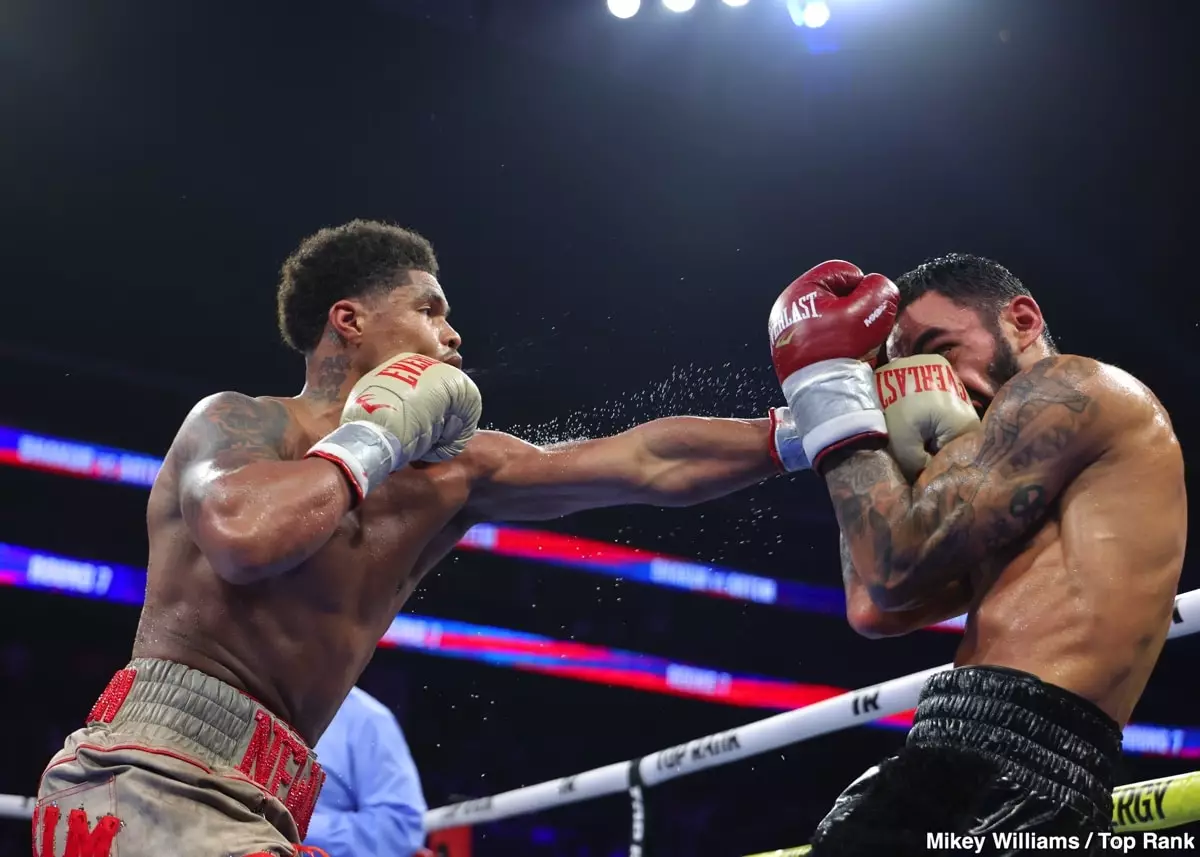Shakur Stevenson, the WBC lightweight champion, is gearing up to defend his title against the rising star Floyd Schofield on February 22 in Riyadh. As he embarks on this significant bout, Stevenson has declared that he is ready to showcase a “new version” of himself within the squared circle. This statement prompts a critical examination of whether a fighter entrenched in a particular style can successfully adapt. Stevenson has primarily relied on a cautious, hit-and-not-get-hit strategy throughout his amateur and professional career. Now, at the age of 27, the question looms: is it realistic to expect a profound transformation at this stage?
Stevenson’s upcoming match presents not only a chance for a title defense but also a vital moment to captivate fans. The circumstances surrounding this fight are unique—competition and expectation are mounting. His previous performance against Artem Harutyunyan raised eyebrows; some critics saw it as lackluster, given he opted for a safety-first strategy against a less formidable opponent. In the boxing world, where excitement and audience engagement are paramount, Stevenson must be wary. A repeat of a tepid performance could jeopardize his standing in influential promotional circles, particularly with events overseen by figures like Turki Alalshikh.
The boxing landscape often favors fighters who can entertain, and Stevenson’s ability to evolve into a more compelling version of himself is crucial. The stakes are high, and Stevenson must recognize the implications of his fighting style, which could determine his future opportunities.
Floyd Schofield, though still early in his career, possesses significant punching power and explosive potential. For Stevenson to claim victory against such a force, he needs to engage more openly rather than retreat as he has in previous bouts. The temptation to remain elusive might be strong, especially given Stevenson’s extensive experience dodging stronger punches. However, sticking to a defensive approach against Schofield could backfire; if he is unable to adapt and show a willingness to mix it up, he may find himself unable to overcome his opponent’s offensive prowess.
Moreover, Schofield’s youth and hunger for recognition add another layer of complexity. He is likely eager to make a statement against an established champion, and Stevenson must rise to this occasion or risk being overshadowed.
In an era when boxing enthusiasts demand action and excitement, fighters like Stevenson face the challenge of staying true to their identities while pleasing the audience. Balancing effectiveness with entertainment is a delicate act, and as Stevenson prepares for this pivotal moment, he must weigh the benefits of his traditional tactics against the need for a more dynamic approach that could enchant spectators and officials alike.
The evolution of Shakur Stevenson is not merely about changing his style; it’s about broader implications for his career, his marketability, and his legacy within the sport. As he steps into the ring on February 22, fans and critics will be eager to see whether he delivers on his promise of a “new version” of himself. In doing so, Stevenson holds the key to not only defending his title but redefining his trajectory in the world of boxing.


Leave a Reply